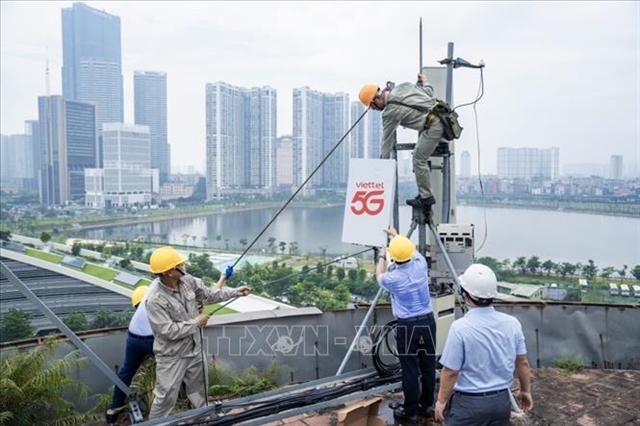Vietnamese operators such as Viettel, VNPT, FPT, and CMC collectively own or co-own seven submarine cables.

HÀ NỘI The Vietnam Posts and Telecommunications Group (VNPT) recently launched the VSTN terrestrial cable, the first to connect Việt Nam directly to Singapore entirely via land infrastructure.
The 3,900km route passes through Laos, Thailand, and Malaysia, linking VNPT’s Đà Nẵng technical hub to regional data centres such as IDC Telehouse (Thailand), MY01 Cyberjaya and Equinix JH01 Johor Bahru (Malaysia), and Equinix and Global Switch (Singapore). The connection reduces reliance on submarine cables and adds capacity for cloud computing, data centre operations, and other digital services.
VNPT currently owns and operates five major submarine cable systems, including AAG, APG, AAE-1, and SJC-2, with a combined international capacity of nearly 36 Tbps.
In April this year, Viettel put into operation the Asia Direct Cable (ADC), a 9,800 km submarine system connecting Việt Nam, China, Hong Kong (China), Thailand, the Philippines, Singapore and Japan. The ADC project has a total investment of US$290 million, with Viettel the only Vietnamese participant among nine global telecom companies.
Alongside ADC, Viettel operates four other submarine cable systems — AAG, IA, APG, and AAE-1 — and recent upgrades have raised its total international capacity to 20 Tbps, 1.8 times higher than in 2024. Between 2026 and 2030, Viettel plans to add five new routes, bringing its total to 10 by 2030.
Across the industry, Vietnamese operators such as Viettel, VNPT, FPT and CMC collectively own or co-own seven submarine cables. This infrastructure is considered important for maintaining national data security, reducing dependence on foreign networks, and improving resilience to outages. According to the Ministry of Science and Technology, Việt Nam’s current number of submarine cables remains lower than Thailand’s eight and the Philippines’ 17.
The undersea cable network has faced repeated service disruptions. Since 2022, there have been nearly 40 incidents, averaging more than 10 per year. At times, four out of five international cables serving Việt Nam have been affected simultaneously, significantly reducing international capacity. In one case, VNPT’s available capacity dropped by over 73 per cent, to about 2 Tbps from a total of 8.8 Tbps. Repairs can take two to three months, and in some instances, up to 12 months.
Under Việt Nam’s national submarine cable strategy, the country aims to have at least 15 submarine cables by 2030, with total capacity reaching 350 Tbps, about ten times higher than current levels.
The plan includes diversifying routes to the south via Singapore and Malaysia, as well as connections to Japan and the United States. At least two of the cables will be domestically owned and connect directly to regional digital hubs.
The strategy also calls for a minimum of two new international terrestrial cables by 2030, ensuring they meet at least 15 per cent of the submarine cable system’s actual capacity. The Ministry of Science and Technology has confirmed support for the construction of Việt Nam’s first domestically owned submarine cable directly to Singapore, with an agreement expected in early 2026. By the end of 2025, the ministry intends to license at least one additional submarine cable project. VNS





